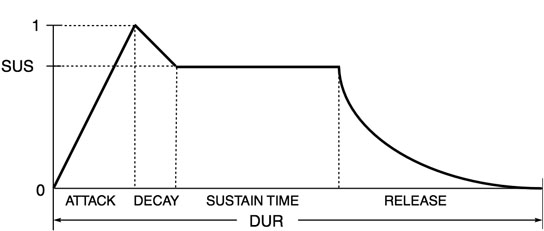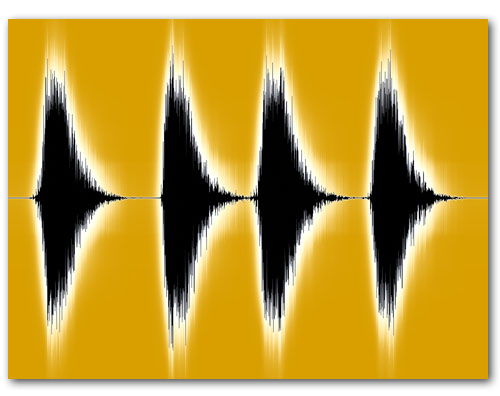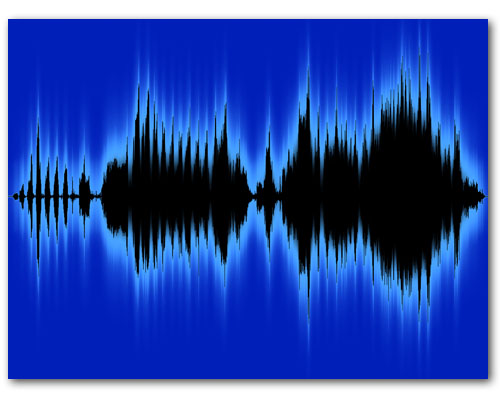Having a fundamental understanding of sound analysis can be a great benefit in building your detecting skills. The first step is to break down the components of an individual sound. It is critically important to know concepts like, Attack, Sustain, Release and Tone.
This will train your ear in discerning what to listen for. But first you need to understand the concept of ‘vigilance’. Here is a great definition from Wikipedia:
"...In modern psychology, vigilance, also termed sustained attention, is defined as the ability to maintain attention and alertness over prolonged periods of time.[1] During this time, the person attempts to detect the appearance of a particular target stimulus. The individual watches for a signal stimulus that may occur at an unknown time. [2][3] The study of vigilance has expanded since the 1940s mainly due to the increased interaction of people with machines for applications involving monitoring and detection of rare events and weak signals. Such applications include air traffic control, inspection and quality control, automated navigation, and military and border surveillance, and lifeguards..."
The takeaway for the detectorist is that vigilance allows you to build listening skills so you can pick up trends occurring with higher probability targets. Vigilance can be improved dramatically with practice, but first you have to know what to listen for. So let’s discuss the breakdown of a signal. The terms that recording engineers use are attack; the beginning or start of a signal, sustain; the main body of the signal and release; how the signal ends.
Look at figure 1 and you will see a graphic break down of the attack, sustain and release. By building your awareness of these three parts of the target signal you will begin noticing interesting trends with various signals.
 Figure 1
Figure 1
- Good targets tend to have short attacks and release
- Good targets tend to have a flat or smooth sustain
- Good targets tend to repeat with the same attack, sustain, release
- Trash signals tend to draw out the attack or release
- Trash signals tend to have variability in the sustain
As an example think of a dog barking (fig 2). The bark starts and stops very quickly. The sustain is short and does not vary much. The bark signals are very similar when repeated. Contrast this to the squawking of seagulls (fig 3). You will notice the signal sustain is variable and it lacks the short attack and release of the dog barking.
 Figure 2
Figure 2
It is similar to the variability we tend to hear with trash signals.
The Tone is simply the voice of the signal. The Excalibur II has a very loyal following because the voice/tones of signals are very pronounced and easy to learn. The CTX 3030 actually lets you change the tones into different sonic bins to customize for the ferrous and conductive qualities of the targets you are looking for.
 Figure 3
Figure 3
So when you combine attack, sustain, release and tone together with specific markers you have some powerful insight into what your detector is telling you. Many CTX 3030 hunters are now listening to the Tone and then cross referencing where the signal lands on the screen for even more information.
While the Excalibur is tone only without a screen it is one of the absolute best tone hunting machines available. With good ears and practice you can tell the difference between silver and most trash items. Gold also tends to sound good with an Excalibur, but you will want to dig the ‘acceptable overlap’ targets such as pop tops and pull tabs.
Bear in mind the examples of the dog barking and seagulls squawking are an oversimplification, but they serve well to illustrate the concepts we will be covering. These two signals are shown in wave form analysis which is a wonderful tool in breaking down the small characteristics of a sound. In fact when you can see the signal as a wave form analysis it can help you listen for small markers you would not have noticed without seeing the sound first. The Concepts of attack, sustain and release apply to any detector... Thus I encourage you to start listening to your signals before you dig them with these concepts in mind.
Look for trends or markers that tend to repeat with the same target. And notice that good targets tend to start fast and stop fast. They tend to be very clean and round sounding. There are always exceptions, but generally rings and coins tend to sound better than common trash targets. In the next installment of this article I will provide some MP3 files comparing target signals. But until then practice building your ears with your next hunts and target digs.
Tony Diana





















Comments